Although ABS is a lifesaver, it can be disastrous if one of its valves is stuck. The wheels of your car will lock up and skid more frequently whenever you brake.
It not only makes the brakes dysfunctional but also puts the driver at risk of injury. Therefore, people who have ABS on their cars should know how to un-stick ABS valves.
To unstick ABS valves, you must unclog them first. After that, you’ll have to remove all the air from the valves and bleed them thoroughly.
In the article, we first discuss the reasons why ABS valves stick. We will then gradually move on to the detailed instructions for unsticking them. So, let’s dive right in!
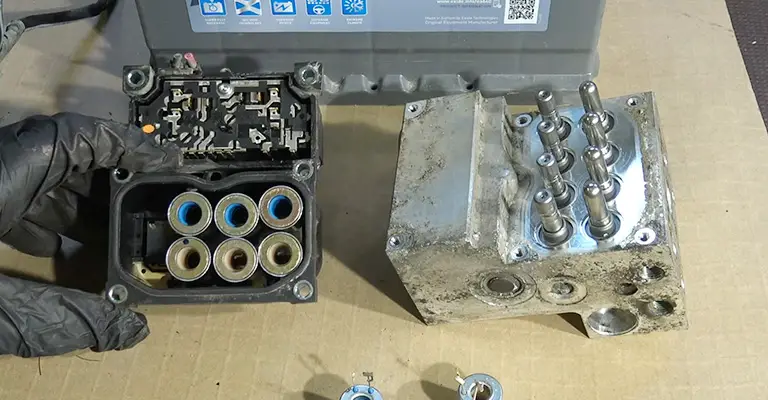
What Are ABS Valves and How Does It Work?
Before we dive into ABS valves, let’s understand what ABS is.
It refers to an anti-lock braking system or anti-skid braking system commonly found in vehicles and aircraft.
When you attempt to stop your car at high speed, it will not halt as smoothly as you would like. Chances are that high speed and sudden braking will lock the wheels and cause them to skid.
This is where ABS shines, preventing wheel locking and providing better control.
But how does it work?
ABS consists of four components. One of them is a valve. It resides within the brake line and transmits pressure directly to the brake.
The valve is also responsible for separating the brake from the master cylinder and releasing a certain amount of brake pressure.
What Causes ABS Valves to Stick?
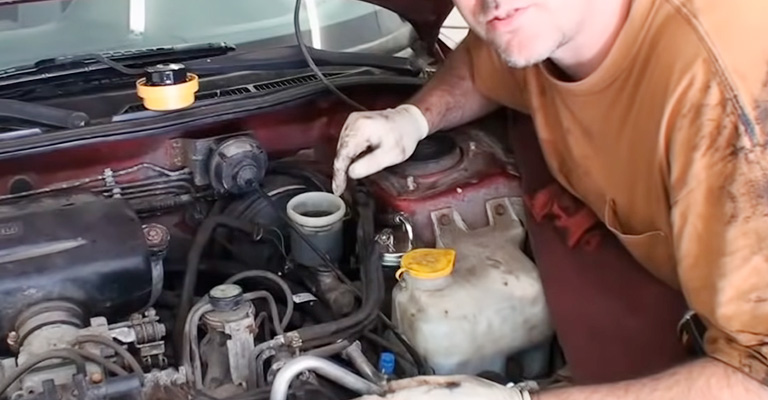
ABS valves are most likely to stick once they are clogged. Several factors can lead to a valve clogging, such as –
- When brake fluids are contaminated
- There is excessive pedal travel
- Pump is overused
Unfortunately, none of the above issues are noticeable to the average car owner. It means even if your vehicle’s ABS valves fail for one of these reasons, you won’t know it. Then how would you find out?
The answer is symptoms. A stuck valve will cause your car to exhibit certain symptoms, which we will discuss now.
Signs of a Stuck ABS Valve
The following five indicators can help determine whether the valves are stuck.
Greater Braking Effort
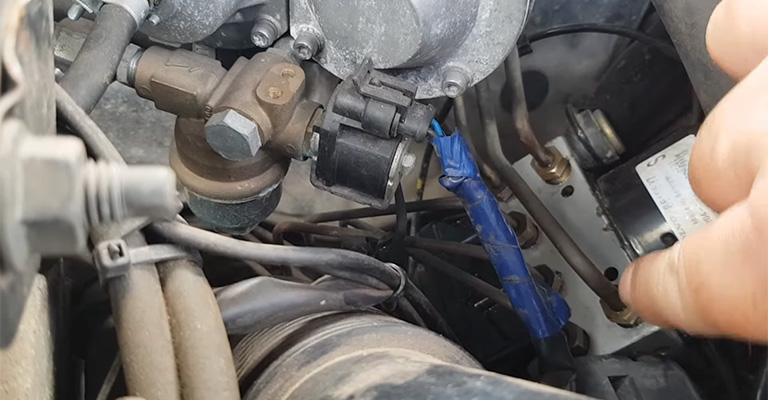
In case you are unaware, it takes little effort to press the pedal when braking—the required effort drops even further when the ABS is activated.
However, if the ABS valve is stuck, simple braking will require a lot of effort.
Locked Wheels
We noted earlier that the ABS’s main function is to prevent wheels from locking up. Unfortunately, the same ABS will lead to more wheel locking when the valve is stuck. Why?
It is because valves can no longer release brake pressure if stuck. Too much pressure will make the problem worse.
Non-responsive Brake Pedal
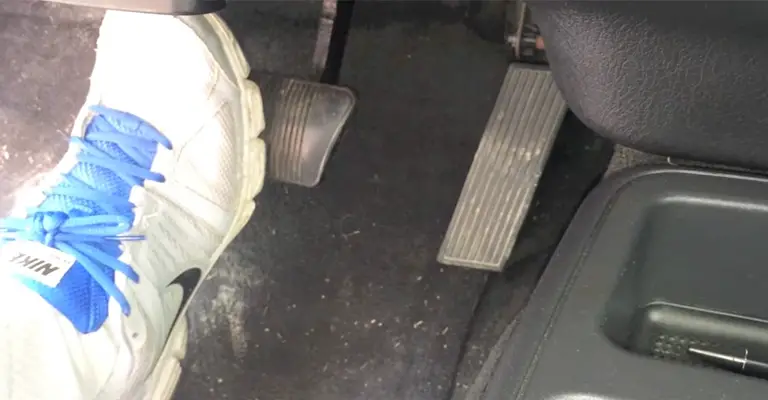
As we explained in the first point, stuck valves increase the effort needed to brake a car. What we did not mention was that the brake pedal would eventually become unresponsive.
You will notice that the brake does not engage even when you step on the pedal. Be sure to fully release the pedal and then press it again for it to respond.
Malfunctioning Speedometer
A stuck or clogged ABS valve may also produce malfunctioning speedometers. In that case, you may experience the following symptoms –
- Despite the car running, the speed needle remains at zero
- The needle gives inaccurate speed readings
It is important to remember that the speedometer issues associated with ABS valves are relatively infrequent.
Display of ABS Light
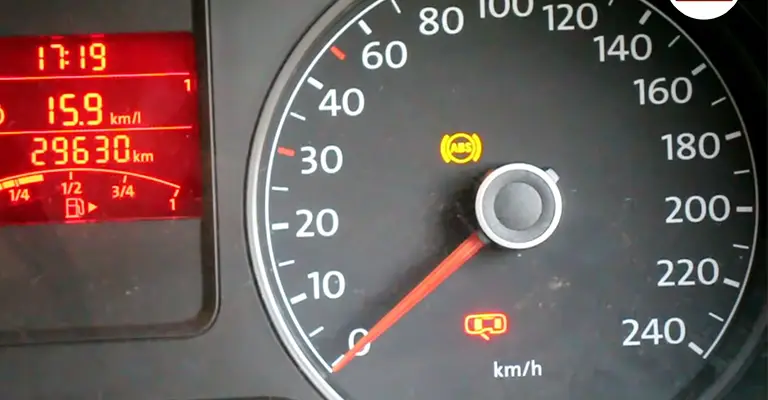
Last but not least, an amber ABS icon appears on the dashboard if there is a stuck valve. However, not every car comes with the ABS light on its dashboard unless it is a newer model.
If your automobile has no ABS indicator, look for a check engine light.
A Guide to Un-Stick ABS Valves
You should unstick the ABS valve as soon as you become aware of its condition.
As you may know, clogging causes valves to stick. If you let all those grimes accumulate for a long time, they will deteriorate your ABS.
Furthermore, such pollutants can also enter other parts of the vehicle and damage them.
The most effective way to unstick a valve is to clear it of clogs. Deep cleaning is the key to that. Let’s explore how you can do that.
Required Tools
- Rubber gloves
- Fluid cleaner
- Large sponge
STEP 1 – Unplug the Battery
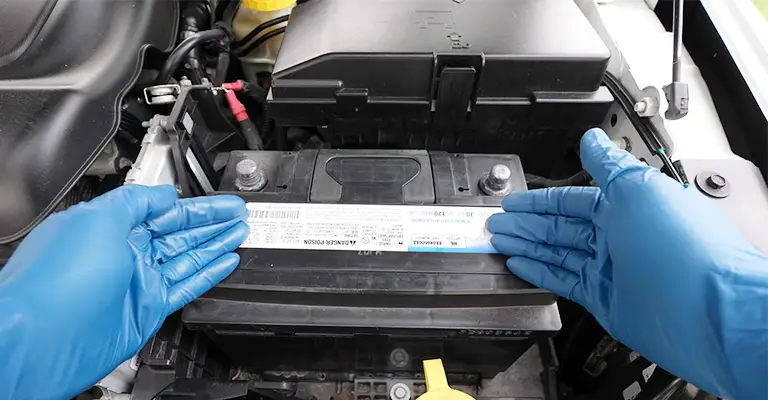
Since your hands will come in contact with chemicals, we recommend putting on rubber gloves first. Make your way to the engine compartment and disconnect the battery safely.
STEP 2 – Clean the Valve
Pick a large sponge and fill it generously with fluid cleaner. Afterward, rub the sponge across the valve.
Be sure to rub the valve until it is free of pollutants on every inch.
Air Extraction from Valves
Cleaning the valve, but it does not unstick entirely. ABS modulators should also contain air, which contributes to stuck valves. Thus, removing air is crucial.
Before we begin air removal, do note that you must be familiar with the ABS modulator. If you are completely new to this, seek professional assistance.
With that in mind, let’s proceed.
Required Tools
- Regular screwdriver
- Wrench
- Vacuum or power bleeder
STEP 1 – Detach the Modulator
The first thing you need to do is detach the ABS modulator from the car. Six screws hold ABS in place. Take them out with a screwdriver and store them somewhere you will remember.
STEP 2 – Remove the Oil Pan
Put aside the screwdriver and grab a wrench. Remove the oil pan from the ABS, and you should see a pipe clearly.
STEP 3 – Use the Vacuum
Now you must choose between a vacuum or a power bleeder. Whatever you select, attach its hose to the oil pipe.
You should then activate the vacuum and position its opposite end on the drain pan. Avoid running the tool at high speeds. Using a low speed protects you from oil splatters.
STEP 4 – Dispose of the Air
The air will start escaping through the drain pan and the pipe. Keep the vacuum running until you no longer see oil coming out.
STEP 5 – Refill Oil
There is a good chance that ABS does not have enough oil after the task. Hence, check the oil level and top it off if necessary.
Once you have poured the oil, finish by putting the screws back in.
Method for Bleeding ABS Valves Manually
As frustrating as it is, the ABS valves of some cars may still remain stuck. That’s because some systems include fluid reservoirs.
It is impossible to unstick the valves of such ABS systems without bleeding them.
The good news is that bleeding is easy to perform. You can even do it without a scanner, which will save you money. Here is how it goes:
Required Tools
- Drip tray
- Car jack
- Hammer
STEP 1 – Lift the Car
Jack up your vehicle securely and access the wheels to find the bleeders.
STEP 2 – Look for a Metal Line
Remove the wheel’s lower section and search for a metal line. Since the metal line has a cap, use a wrench to take it off.
STEP 3 – Press the Bleeding Valve
Now place a drip tray beneath the metal line. Use a hammer to press the bleeding valve.
If something falls off it, the drip pan will catch it. Thus, you can apply pressure to the valve without worrying.
STEP 4 – Pump the Brake Pedal
Pump the brake pedal with your hands. As long as the fluid does not come out of the bleeder, continue pumping.
STEP 5 – Expel the Air
When the fluid has been removed, you can let the air out either with your fingers or by hammering the valve.
If bubbles remain on the bleeder, repeat the procedure.
Frequently Asked Questions
Can a stuck ABS isolation valve cause brake pull?
Yes, a stuck ABS valve may lead to brake pull. However, this only occurs when the ABS is engaged. It means there will be no brake pull under normal braking conditions.
Why does the ABS warning light stay on?
ABS warning lights may remain on due to problems with the brake system. In more precise terms, if any ABS valves are stuck, this light is most likely to appear.
Final Words
As you can see from the symptoms, valves getting stuck can lead to serious complications.
Fortunately, mastering how to un-stick ABS valves, the process is straightforward. All you have to do is clean them, get the air out, and finally bleed them.
Leave a Reply